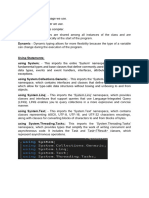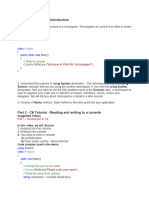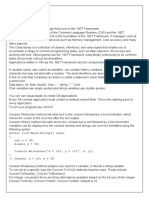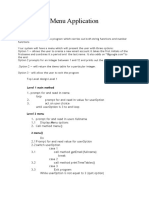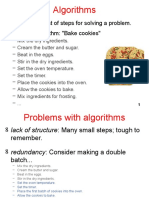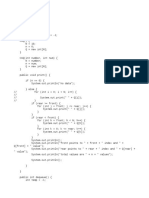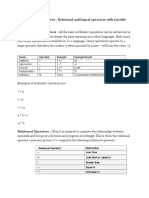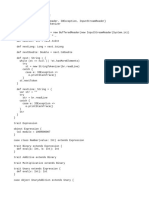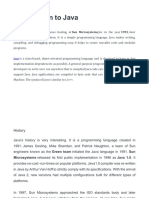0% found this document useful (0 votes)
19 views8 pagesCSharp Teaching Notes
This document provides comprehensive notes on C# string formatting methods, including string concatenation, String.Format, and string interpolation. It also covers the use of 'var' for type inference, exception handling with try-catch blocks, the int.TryParse method for safe integer conversion, switch statements for handling multiple conditions, and logical operators for combining conditions in if statements.
Uploaded by
Judith NelsonCopyright
© © All Rights Reserved
We take content rights seriously. If you suspect this is your content, claim it here.
Available Formats
Download as DOCX, PDF, TXT or read online on Scribd
0% found this document useful (0 votes)
19 views8 pagesCSharp Teaching Notes
This document provides comprehensive notes on C# string formatting methods, including string concatenation, String.Format, and string interpolation. It also covers the use of 'var' for type inference, exception handling with try-catch blocks, the int.TryParse method for safe integer conversion, switch statements for handling multiple conditions, and logical operators for combining conditions in if statements.
Uploaded by
Judith NelsonCopyright
© © All Rights Reserved
We take content rights seriously. If you suspect this is your content, claim it here.
Available Formats
Download as DOCX, PDF, TXT or read online on Scribd
/ 8






